A younger generation of winemakers in Bordeaux is determined to reverse decline. Claire Hu reports
For Yvon Mau, one of Bordeaux’s most powerful wine merchants, the time for straight talking about the problems being faced by the French wine industry has arrived. “Here in Bordeaux, many producers are stuck in their ways. The war to win consumers is on our doorsteps, but they don’t like bad news and refuse to react.”
His outburst demonstrates a growing recognition in Bordeaux and across the rest of the country that urgent action is needed by the trade to avert what is being described as its biggest sales crisis in decades.
Emotions are running high in the world’s most famous wine region as it struggles to compete in the export market against the might of the New World and changing consumer tastes in favour of fruity, easy-drinking brands. A government campaign against alcohol abuse and decreasing domestic consumption has added to the woes in the region, which is seen as a microcosm of the rest of the country’s wine production.
The battle for consumers is particularly fierce in the UK, which Bordeaux has been exporting to for three centuries. Supermarket price wars and the dominance of big Australian brands such as Hardys (Constellation) and Jacob’s Creek (Pernod Ricard), who can afford to spend millions on marketing, has pushed regional French wines off shelves. The latest figures from ACNielsen show that despite maintaining the number two spot in the UK, French wine declined 2% in value in 2004. For the first eight months of 2004, the French federation of wine and spirits in France said overall exports of Bordeaux fell 25.4% in value, although the region is expected to show a small increase in the UK.
Mau, who distributes brands such as Mau, Premius and Yvecourt, estimates that 10% of the region’s 12,000 winemakers are in financial difficulties. There has been a 30% fall in the price growers receive per tonne for basic Bordeaux appellation wines, increasing pressure on smaller châteaux that have borrowed heavily for investments.
Despite this gloomy prognosis, there are signs in Bordeaux that a younger generation of wine producers are staging a comeback. Viticulturalists and négociants (merchants), who deal in and often produce their own brands, have begun taking a more modern approach to producing and marketing wine. It is their ability to adapt that will determine the future health of the Bordeaux wine trade, according to Mau, who believes the UK lies at the heart of France’s struggle to win and retain consumers.
“The price war in the UK, led by Wal-Mart, and the explosion of brands has had a huge impact,” he says. “The UK market is one of the toughest markets in the world and, in terms of competition, it’s where the heart of the battle lies. There is a surplus in world wine production and the UK and US are the two places on the planet where that wine will be sold, as in Spain they tend to drink Spanish wine and in Italy they drink Italian, and so on. So the New World will carry on putting enormous pressure on us in these markets.”
The complex Appellation d’Origine Contrôlée (AOC) system in Bordeaux, which encompasses nearly 60 different classings and 3,000 individual château names and is supposed to demonstrate a wine’s regional credentials (or terroir), is also being blamed for the region’s difficulties in the export market. Governed by strict production methods, many Bordeaux winemakers look with envy at New World countries such as Australia, which can label according to
grape variety and use less expensive methods such as wood chips instead of oak barrels. Many are calling for the AOC system to be simplified for the basic Bordeaux producers, in order to make it easier for consumers to understand what they are buying. The prestige attached to the best Bordeaux, or grand crus, which make up 10%-15% of total production, means this sector generally has no problems selling.
It is instead the crucial £4 to £6 market which is struggling, according to Mau. With thousands of individual producers, it is impossible to produce the volumes needed by the supermarkets or provide adequate marketing support, he says. He believes the creation of more brands is the only way to succeed in this price bracket. “I don’t think a generic campaign could work. What we need is to encourage more brands.
“The £4 to £6 bracket is where the battle lies, and Bordeaux hasn’t got a chance there without brands. Hundreds of different châteaux cannot fight against the New World, the consumer feels lost and supermarkets such as Tesco and Morrisons need volumes from us that only the big companies can produce.
“I think the quality Bordeaux market will stay healthy, but I see no future in the UK for anonymous products which have no marketing support.”
Mark Murphy, director of alcohol at Tesco, adds that a simplified approach to marketing Bordeaux is needed. “The problem is that many customers don’t know what Bordeaux is. What they want is a nice-drinking wine they can be confident will deliver.
“The problem is, Bordeaux doesn’t know who its customers are, and it needs to deliver simple messages about what the great characteristics of a Bordeaux are. They need a simple marketing message that will cut through, and show people that there are some unbelievable wines in Bordeaux but also cheaper wines at the other end of the spectrum. I think the more people get to know about Bordeaux, the more they will want to drink it.”
Producers on the front line
>>Call to action on AOC, pricing and marketing
Jean-Marie Chadronnier, chairman of Vinexpo and president of CVBG, which owns the Dourthe and Kressmann brands
People are talking about a crisis. We are facing more difficult times now than five years ago and we have to adapt our strategy to that. We have to deliver wines the consumer likes, and we have to communicate with familiar words and images. Marketing is going to be key to building business.
I think we have to simplify things and make the AOC system more understandable. Quality is also key. You can always say no to the supermarkets, I am not going to sell my soul supplying wines that are not of the quality level of which I am proud. If all the suppliers said no, then the quality would increase. At £5, there are plenty of Bordeaux wines I can offer you that easily match the New World equivalent. I think £5 is achievable.
We have not been alert enough in the past five years to the competition, which is fierce and growing, and that we needed to change our strategy. We need to build brands and consumer loyalty, otherwise it’s like declaring war and not having any troops.
Philippe Pieraerts, owner of Château Carignac.
AOC: Premières Côtes de Bordeaux
I bought the vineyard in 1981 and have since invested around o4m. Our annual production is 450,000 bottles.
We are trying to make full, fruity wines that have reached full maturation, similar to a New World style but with finesse. Consumers want fruity wines that are low in tannin and acidity, and we need to respond to this. The consumer doesn’t want to invest in wine and keep it for many years, they want to buy it on Friday and drink it on Saturday.
We need to sell Bordeaux at the right price. We will never make the millions of cases that Australia does at such a low price, but we can offer more individual style.
A lot of producers in Bordeaux complain, but the fact is they are not making wines that people want to drink. France started a revolution, but we are still very conservative.
Jean-Jacques Bonne, director of Château Malartic Lagravière. AOC: Grand Cru Classé de Graves
When my family took over in 1997, the château had gone down in reputation and we have since halved the yield. We now produce about 200,000 bottles of red and 30,000 of white.
We invested o8-o10m and now have one of the most modern wineries in the world using a gravitational system that people come from all over the world to see.
There are different reasons for the crisis in Bordeaux. The regional producer has to contend with competition from many more producers around the world.
People now want buying wine made easy, they want the security of knowing what’s in the bottle, and this is something France is not good at doing. In Bordeaux, we have 12,000 producers and 59 appellations and it can be hard to be competitive on-shelf.
I think we need to keep our diversity and appellations, but we need to invest in the quality of the more basic appellations and they need more freedom about production. A grand cru like us has no problem selling our wines, but there has been inconsistency in the appellations, which damages the whole region. Twenty years ago, Bordeaux was considered the best wine in the world and had no problem selling it, but I think this meant some producers were not working the vineyard as hard as they should have been.
For Yvon Mau, one of Bordeaux’s most powerful wine merchants, the time for straight talking about the problems being faced by the French wine industry has arrived. “Here in Bordeaux, many producers are stuck in their ways. The war to win consumers is on our doorsteps, but they don’t like bad news and refuse to react.”
His outburst demonstrates a growing recognition in Bordeaux and across the rest of the country that urgent action is needed by the trade to avert what is being described as its biggest sales crisis in decades.
Emotions are running high in the world’s most famous wine region as it struggles to compete in the export market against the might of the New World and changing consumer tastes in favour of fruity, easy-drinking brands. A government campaign against alcohol abuse and decreasing domestic consumption has added to the woes in the region, which is seen as a microcosm of the rest of the country’s wine production.
The battle for consumers is particularly fierce in the UK, which Bordeaux has been exporting to for three centuries. Supermarket price wars and the dominance of big Australian brands such as Hardys (Constellation) and Jacob’s Creek (Pernod Ricard), who can afford to spend millions on marketing, has pushed regional French wines off shelves. The latest figures from ACNielsen show that despite maintaining the number two spot in the UK, French wine declined 2% in value in 2004. For the first eight months of 2004, the French federation of wine and spirits in France said overall exports of Bordeaux fell 25.4% in value, although the region is expected to show a small increase in the UK.
Mau, who distributes brands such as Mau, Premius and Yvecourt, estimates that 10% of the region’s 12,000 winemakers are in financial difficulties. There has been a 30% fall in the price growers receive per tonne for basic Bordeaux appellation wines, increasing pressure on smaller châteaux that have borrowed heavily for investments.
Despite this gloomy prognosis, there are signs in Bordeaux that a younger generation of wine producers are staging a comeback. Viticulturalists and négociants (merchants), who deal in and often produce their own brands, have begun taking a more modern approach to producing and marketing wine. It is their ability to adapt that will determine the future health of the Bordeaux wine trade, according to Mau, who believes the UK lies at the heart of France’s struggle to win and retain consumers.
“The price war in the UK, led by Wal-Mart, and the explosion of brands has had a huge impact,” he says. “The UK market is one of the toughest markets in the world and, in terms of competition, it’s where the heart of the battle lies. There is a surplus in world wine production and the UK and US are the two places on the planet where that wine will be sold, as in Spain they tend to drink Spanish wine and in Italy they drink Italian, and so on. So the New World will carry on putting enormous pressure on us in these markets.”
The complex Appellation d’Origine Contrôlée (AOC) system in Bordeaux, which encompasses nearly 60 different classings and 3,000 individual château names and is supposed to demonstrate a wine’s regional credentials (or terroir), is also being blamed for the region’s difficulties in the export market. Governed by strict production methods, many Bordeaux winemakers look with envy at New World countries such as Australia, which can label according to
grape variety and use less expensive methods such as wood chips instead of oak barrels. Many are calling for the AOC system to be simplified for the basic Bordeaux producers, in order to make it easier for consumers to understand what they are buying. The prestige attached to the best Bordeaux, or grand crus, which make up 10%-15% of total production, means this sector generally has no problems selling.
It is instead the crucial £4 to £6 market which is struggling, according to Mau. With thousands of individual producers, it is impossible to produce the volumes needed by the supermarkets or provide adequate marketing support, he says. He believes the creation of more brands is the only way to succeed in this price bracket. “I don’t think a generic campaign could work. What we need is to encourage more brands.
“The £4 to £6 bracket is where the battle lies, and Bordeaux hasn’t got a chance there without brands. Hundreds of different châteaux cannot fight against the New World, the consumer feels lost and supermarkets such as Tesco and Morrisons need volumes from us that only the big companies can produce.
“I think the quality Bordeaux market will stay healthy, but I see no future in the UK for anonymous products which have no marketing support.”
Mark Murphy, director of alcohol at Tesco, adds that a simplified approach to marketing Bordeaux is needed. “The problem is that many customers don’t know what Bordeaux is. What they want is a nice-drinking wine they can be confident will deliver.
“The problem is, Bordeaux doesn’t know who its customers are, and it needs to deliver simple messages about what the great characteristics of a Bordeaux are. They need a simple marketing message that will cut through, and show people that there are some unbelievable wines in Bordeaux but also cheaper wines at the other end of the spectrum. I think the more people get to know about Bordeaux, the more they will want to drink it.”
Producers on the front line
>>Call to action on AOC, pricing and marketing
Jean-Marie Chadronnier, chairman of Vinexpo and president of CVBG, which owns the Dourthe and Kressmann brands
People are talking about a crisis. We are facing more difficult times now than five years ago and we have to adapt our strategy to that. We have to deliver wines the consumer likes, and we have to communicate with familiar words and images. Marketing is going to be key to building business.
I think we have to simplify things and make the AOC system more understandable. Quality is also key. You can always say no to the supermarkets, I am not going to sell my soul supplying wines that are not of the quality level of which I am proud. If all the suppliers said no, then the quality would increase. At £5, there are plenty of Bordeaux wines I can offer you that easily match the New World equivalent. I think £5 is achievable.
We have not been alert enough in the past five years to the competition, which is fierce and growing, and that we needed to change our strategy. We need to build brands and consumer loyalty, otherwise it’s like declaring war and not having any troops.
Philippe Pieraerts, owner of Château Carignac.
AOC: Premières Côtes de Bordeaux
I bought the vineyard in 1981 and have since invested around o4m. Our annual production is 450,000 bottles.
We are trying to make full, fruity wines that have reached full maturation, similar to a New World style but with finesse. Consumers want fruity wines that are low in tannin and acidity, and we need to respond to this. The consumer doesn’t want to invest in wine and keep it for many years, they want to buy it on Friday and drink it on Saturday.
We need to sell Bordeaux at the right price. We will never make the millions of cases that Australia does at such a low price, but we can offer more individual style.
A lot of producers in Bordeaux complain, but the fact is they are not making wines that people want to drink. France started a revolution, but we are still very conservative.
Jean-Jacques Bonne, director of Château Malartic Lagravière. AOC: Grand Cru Classé de Graves
When my family took over in 1997, the château had gone down in reputation and we have since halved the yield. We now produce about 200,000 bottles of red and 30,000 of white.
We invested o8-o10m and now have one of the most modern wineries in the world using a gravitational system that people come from all over the world to see.
There are different reasons for the crisis in Bordeaux. The regional producer has to contend with competition from many more producers around the world.
People now want buying wine made easy, they want the security of knowing what’s in the bottle, and this is something France is not good at doing. In Bordeaux, we have 12,000 producers and 59 appellations and it can be hard to be competitive on-shelf.
I think we need to keep our diversity and appellations, but we need to invest in the quality of the more basic appellations and they need more freedom about production. A grand cru like us has no problem selling our wines, but there has been inconsistency in the appellations, which damages the whole region. Twenty years ago, Bordeaux was considered the best wine in the world and had no problem selling it, but I think this meant some producers were not working the vineyard as hard as they should have been.

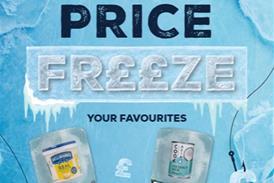


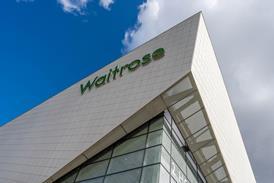



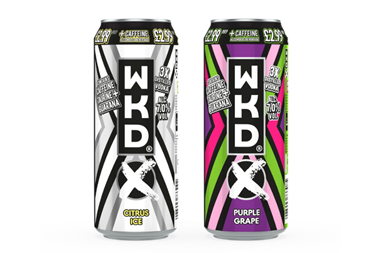
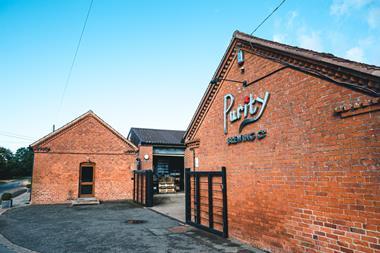
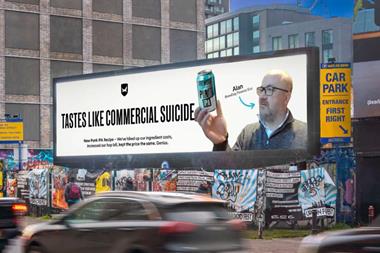
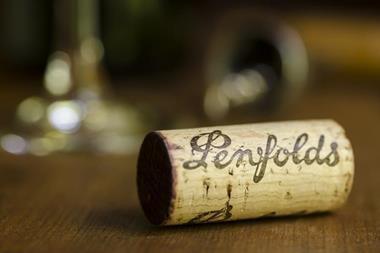
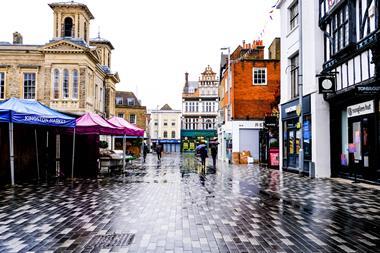
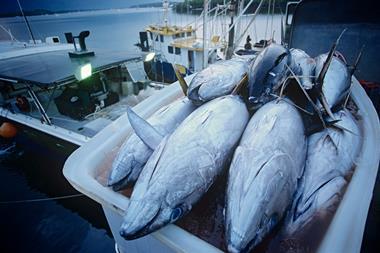
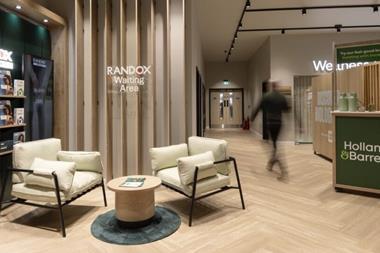
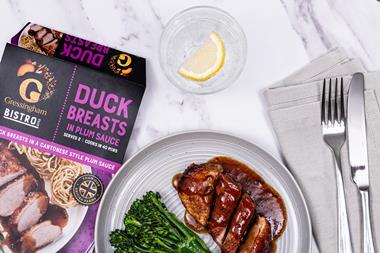
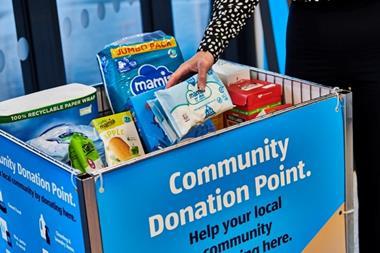
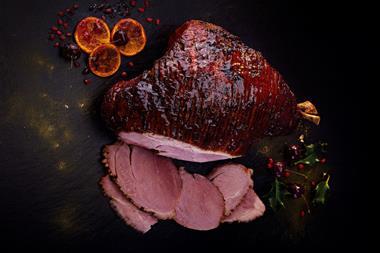
No comments yet